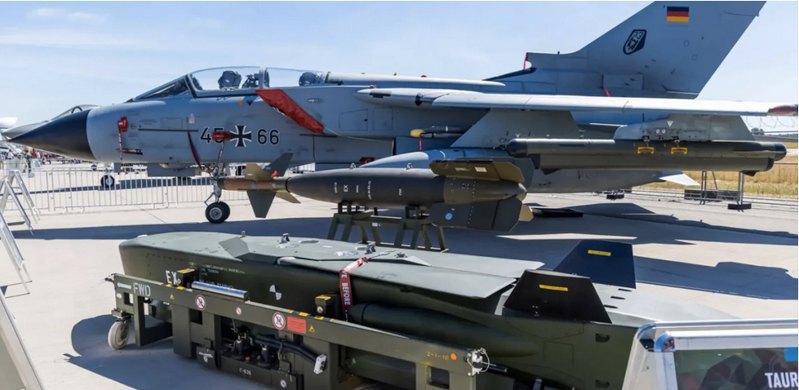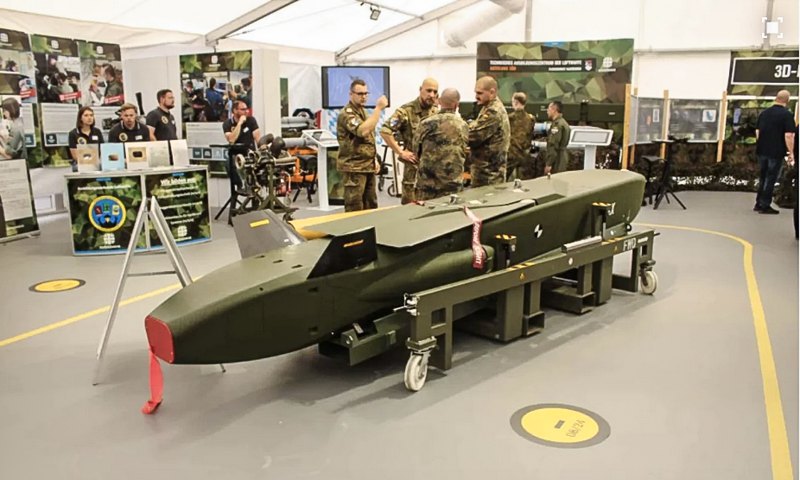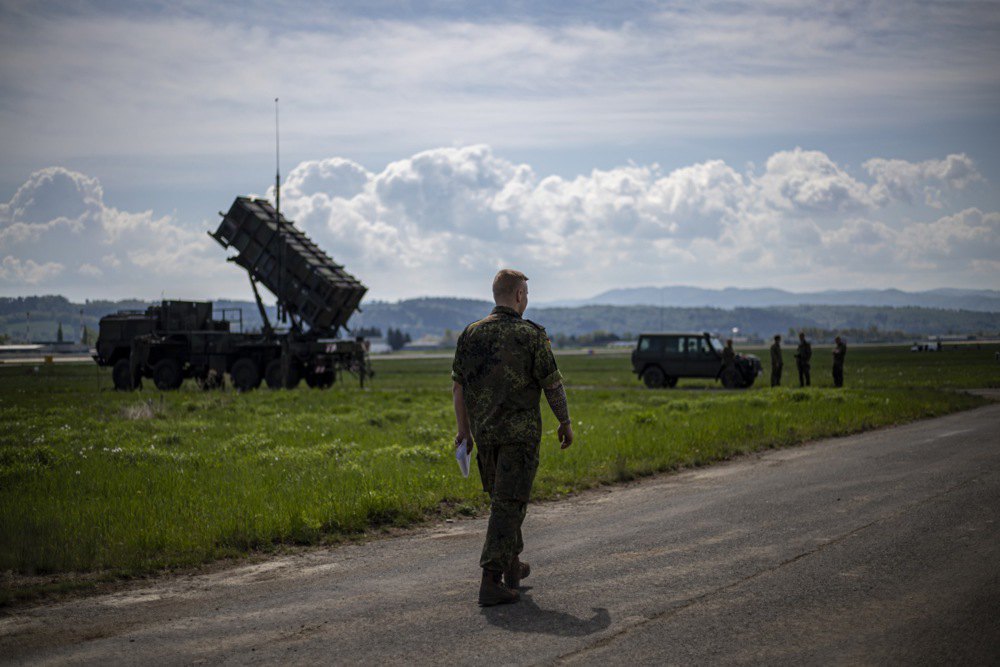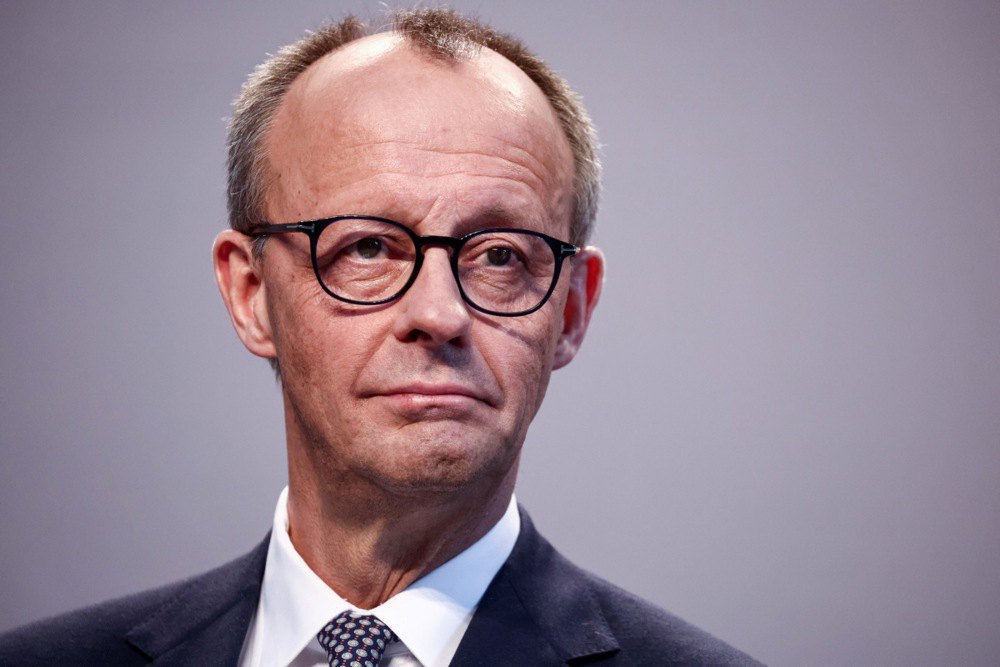
We are talking about at least 150-200 cruise missiles out of the approximately 300 that were operational as of autumn 2024.
The Taurus is a modular cruise missile weighing 1360 kg with a half-tonne warhead. At the development stage, its main task was to engage point hard targets. For example, a company of tanks, camouflaged and hidden, a bunker, a single self-propelled artillery system in a simulated Libya, and not the endless armoured hordes of the Warsaw Pact.
That is why two versions were developed at once - one with a double penetrating warhead to destroy buildings, bunkers, communication hubs, and a cluster warhead for hard targets.
Later, when Germany signed a convention banning cluster munitions, they began to develop various exotic warheads - warheads with penetrators (penetrating parts) for multi-storey bunkers, payloads that conduct electronic warfare or disable electronics using microwave radiation.
They also have a warhead with Smarts, anti-tank weapons that we used very effectively in the war.
The Germans are preparing to order the Taurus Neo, an updated version of the missile. They plan to replace all 600 missiles for 600 million euros over five years. This means that much more than the 150-200 missiles announced can be sent to us for restorative repair and modernisation.

Perhaps someone will do it faster, but it is unlikely that these countries will go for industrial mobilisation until we are talking about mobilising people under 25, women for positions in the rear and in industry, students, disarmament
Our society is ‘not ready for this’, while we have lost 18% of our territory and 7 million people as refugees, and hardly anyone in the country is ready to assemble hundreds of cruise missiles a year in three shifts. This is how it works now.
However, on the other hand, Germany is part of the EU and NATO. In the European theatre, it will operate together with France, Italy, the United Kingdom, and the combined air forces of the Scandinavian countries. Poland, for example, also has American-made cruise missiles. They have modular warheads capable of hitting both buried hard targets and vehicles, runways, simulating a group of decoys, and dazzling radars.
Since any enemy in the theatre of operations has factories under attack from European aircraft, and it is difficult to reach European factories in Germany, France and the UK, at least because of dozens of Patriot batteries, the air force on the eastern flank and the lag in the number of aircraft, no one wants to test the EU's resolve to unleash Scalps and Storm Shadow on the enemy.
The missile is more modern than most of its classmates in service. There are versions with a two-way communication channel, which means it can reach large moving targets, ideally ships and submarines in a surface position.
The Taurus has four guidance systems at once - terrain map, optical images of the route, satellite and inertial.
Each mission is designed for a specific missile, taking into account radar activity in the sectors, the ability to cling to the riverbed or hills, and power lines. And at the end, the infrared head searches the target bank for matches and selects the attack mode - to make it more likely that the main charge will penetrate, to make an airburst and send up a cloud of shrapnel, or to make the one-and-a-half-tonne ‘cigar’ remain as invisible as possible to air defences.
Many people write about the Crimean bridge in the context of the missile transfer, which is a blow to morale and the supply of Crimea.
But it could be the same with the US Operational Tactical Missile Weapons or those Scalps. Our task is not to shoot all this at the air defence training grounds, bases and batteries - although it cannot be said that it was in vain at the time.

In Yamal, one of the richest regions, payments to contract workers will be cut almost in half.
Income growth rates are falling from month to month, debt service is growing, plus there is a huge debt on business loans and mortgages, a huge burden on sanctions circumvention and procurement for the military-industrial complex.
Almost the entire non-military part of the Russian budget is falling, including transportation, mining, construction, the number of cars sold, and even the number of vacancies on job search sites.
All this suppresses the outflow of labour into the military-industrial complex and the 21% discount rate. Grinding down the spiral with falling oil and gas revenues.
If you convert bakeries to drone production for a long time and try to replace several thousand destroyed tanks and infantry fighting vehicles, this will happen.
That's why all these restrictions - Scalps only on the headquarters in the Kursk Region, guided bombs only on warehouses and forward command posts - tie our hands. Sometimes our partners also voice perfect nonsense.
The German Ministry of Defence's website predicts that in a few years there will be a major conflict with Russia, while at the same time it would be better for the Germans to let this war last as long as possible and that by the end of the war, it is impossible to join the EU and NATO, as Merz says. It looks like schizophrenia.








